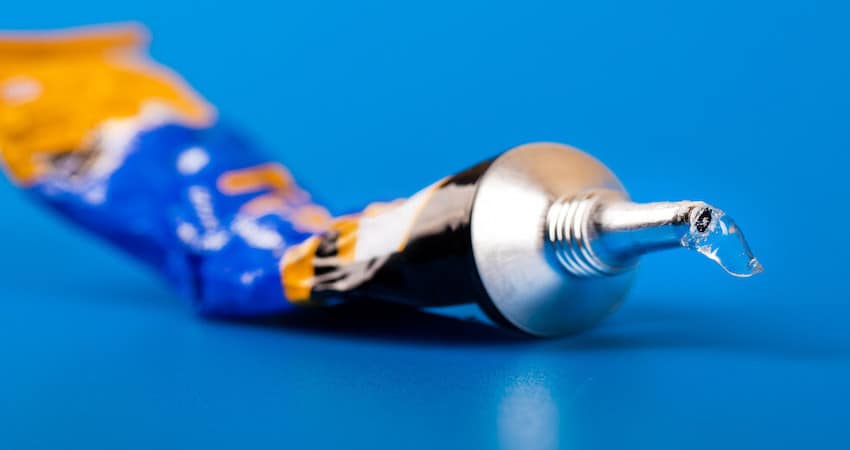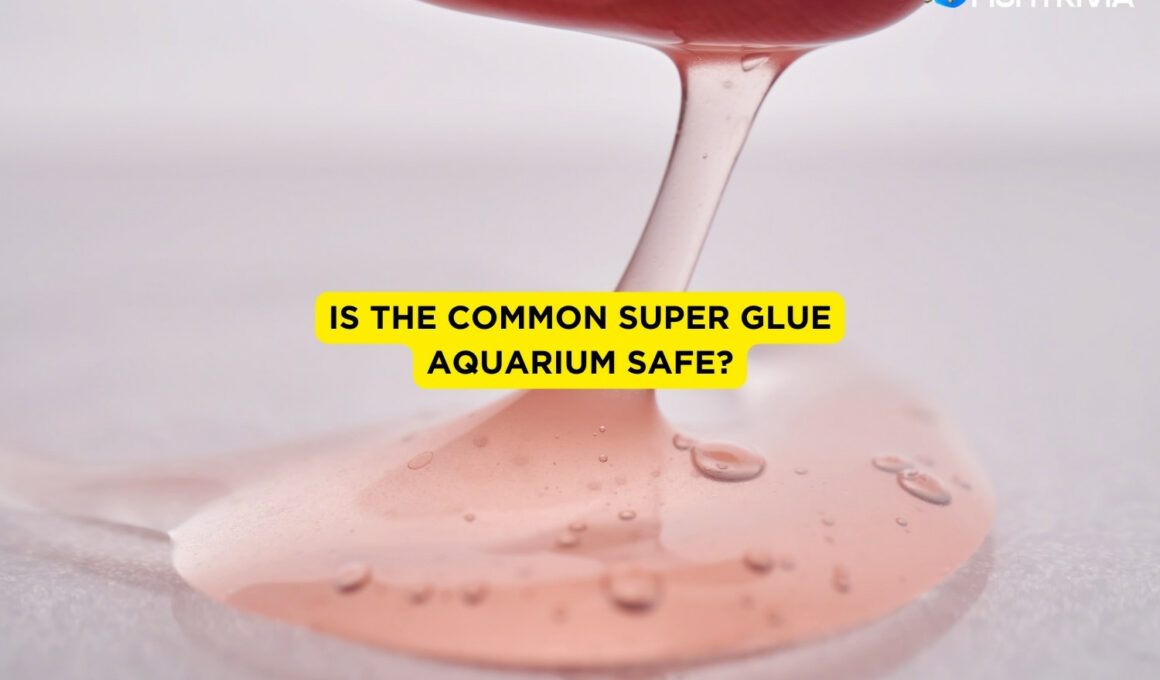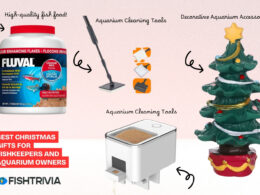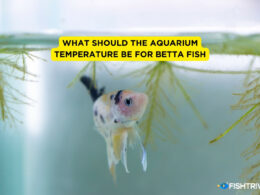In this article Show
Assume you bought a brand new aquarium today, now it is time to decorate it. You manage every detail you want to add to your aquarium. You place them with glue. Gave them some time to dry up. Then finished all the procedures to keep fish in it.
The next morning, the most awful thing you notice with your fish tank is all the decorations are floating on the surface of the water. Maybe not all of them, maybe a few, maybe more than a few.
This is the moment when you become very concerned about the health of your fish. There are different kinds of chemicals in the glue. Yes, it can harm the fish. Sometimes that makes aquarium owners wonder whether they can or can not superglue in their aquariums and if it is healthy for fish.
Yeah, glue is very safe to use in aquariums, if you wonder about it too. We will also say it isn’t just suitable for your freshwater or seafood fish, but also the perfect way of fixing your aquariums and decorating them.
If you are yet too concerned, then let’s get you through an elaborate discussion about Common Super Glue.
Also worth reading;
- What Do Clownfish Eat In An Aquarium?
- How Much Gravel Does An Aquarium Need?
- How Long Should You Boil Driftwood For Your Aquarium?
- What Paint Can I Use In An Aquarium That Is Not Toxic To Fish
- Best Ways to Clean An Acrylic Aquarium: Complete Guide
Common Super Glue Working Process
Cyanoacrylate is the most active portion of the traditional super glue. It forms a stable and solid water bond. Water ultimately helps to cure the glue much quicker due to the chemical bonds that are formed after touching.
In 30 to 45 seconds, it polymerizes. By description, cyanoacrylate is an aquarium-secure adhesive. In the curing process, the water serves basically as an amplifier/catalyst.

Common Super Glue Efficiency
From the above discussion, we can have a decision that, common super glue is very strong. It is a very easy-to-use process. The main process of superglue is to bond 2 objects fast.
That is why common superglue is very famous for keeping decorative plants in place, an aquarium. Another essential reason for its popularity is its resistance to heat and moisture.
This is why it can stick on almost any surface like, stones, rocks, metalwork, plastic, glass, and most other common objects that are benign used in the aquarium.
But there are awesome drawbacks too. If you intend to stick the walls of the aquarium together, then it might not be able to.
Note that, it is good at sticking objects together, not sealing for water. For this, you may find an aquarium-safe silicone sealant. It is the best option for attaching the walls.
Applying Super Glue
The name defines its work. It becomes super hard after applying and giving it the time to dry up. As mentioned above, super glue can be applied to almost any decor in your aquarium. Yet, you have to be very careful, as well as fast.
You should first plan the surface on which you can attach. However, when used beyond water, it is not the most critical step. When you put it underwater, we suggest it. Remove the slime coating to make the glue the most likely to bind.
Melamine foam may be used. Cheap, smaller bits are possible and nearly all can be replaced. Your plant is the next step. You would then bring it in order. Switch over the plant with a few drops of adhesive! Be swift and press the plant to the segment you planned before.
You just have to sustain it and keep the pressure on it for a bit. The adhesive can now sustain the plant without your assistance if you use the appropriate glue. All you’ve got to do now is repeat the decorations until they’re coated in healthy aquarium plants. For every use, just put the cap back on.
Restriction for Applying Super Glue
You really would not want your aquarium to fall apart all of a sudden right? Many fish tank owners would think of attaching the fish tank walls with super glue. Yes, “only” attaching them will be a great idea. But using them like a fish tank? We doubt it would hold.
Reading all through here, you already know that, it becomes very hard when you apply it. That means you can not expect flexibility. It is common physics that, when you pour water into your fish tank, it would try to take up as much space as possible by expanding the volume and shape.
To hold that, you will need something that would seal and hold the walls as well as keep the flexibility. Aquarium silicone sealant is the most suitable idea for this. There are not many reports of superglue toxicity. Most of the time the glue is in liquid form.
Which becomes hard after it is dry. One thing you should keep in mind is never to use super glue directly on the water. No, there is not going to be an explosion. But if one of your fish gets interested in the dried-out floating glue it may take it in the mouth.
3 Types of Aquarium Super Glue
It does not have to always be the liquid type of glue you use. Three types of aquarium glue are reported safe. Keep reading as we present them to you;
1. Epoxy
Epoxy is more of a sticking solution rather than an aquarium super glue. An essential pro of Epoxy is it never makes your fish tank water cloudy. That means you don’t have to worry about its toxicity.
Apply the epoxy and sprinkle it around a container with water to remove the excess substance if you want to keep the coral in place. Use the epoxy on them for other materials. Now put the furniture back in the tank, if you combine it.
If not, make sure that your decorations are all properly placed on the surface of the tank because the strength of the epoxy will not only remove the attachment.
2. Silicon Glue
The best-glued type for aquarium plants may be Superglue, but the most effective way to repair all decorations and breaks in tanks is to guarantee the aquarium protection silicone sealants.
Mainly silicone is the sealing of your aquarium. Since many aquarium owners dry a lot quicker than silicone sealants, Super adhesives remain the favorite. However, it is worth waiting for aquarium-safe silicone since it has solid bonds and zero contaminants while it is dry.
For extra measures, silicone. Upon board, add silicone. Before doing this, ensure that the surface is dry. Wait until you harden or dry it if you are using it to patch a leak. Do likewise for the surface adhesive of the tank decorations.
3. Typical Super Glue
The more we would say about superglue, the less it will be. Nothing can compare to the strength of the holding of superglue.
But of course, it can not be used in all places. Yet, decorating it is the most useful product. Arrange the areas to which the plant or decorations are attached. Dispose of some surface dirt or moss.
Using a healthy super glue on the top of the aquarium. Stick to the top of the plant or decoration. Use a few seconds of pressure to protect the connection. After use, bring the super glue cap back to avoid drying.
We have also mentioned this above. The thing we are trying to say is, that among the types of glue, Superglue is practically the best option.
5 Best Common Aquarium Safe Super Glue
Let’s introduce you to some top-ranking superglue just perfect for aquariums. You may get them on Amazon or even can look for them in the local market.
Comparison Chart
| Aquarium Glue | Feature | Buy From Amazon |
| Loctite Liquid Professional Super Glue |
|
Check It Out |
| Gorilla 102433 XL Super Glue Gel |
|
Check It Out |
| Aqueon Silicone Sealant |
|
Check It Out |
| Super Glue 15185 Gel |
|
Check It Out |
| Seachem Flourish Glue |
|
Check It Out |
Frequently Asked Questions
How safe is super glue for fish?
Super glue is safe to use in fish tanks since it is totally inert when wet or moist.
Can your Fish be killed for Super Glue?
Super glue is fine if you build something to put into the tank. Remember to use it from the water and refresh it for a few moments before putting it in the water.
Can Super Glue be leached in the water?
When they polymerize, cyanoacrylates are safe. And in contact with water, they polymerize.
Conclusion
That is all for your aquarium super glue. Never underestimate the warnings mentioned in the package. Superglue gel dries white. And underwater, it’s very visible. This is not at all a problem for plants that will grow over it, hiding it from sight.
But it can be much more difficult to hide messy glue work on anything else, such as decorations. Yet you can form a bond that is virtually invisible if you have a stable hand and are tight with glue.
Make sure you use a high-end pedigree for the right product and always follow the instructions of the manufacturer. Overall, using super glue won’t hurt the health of your fish tank lives. Just be sure to use them properly.










